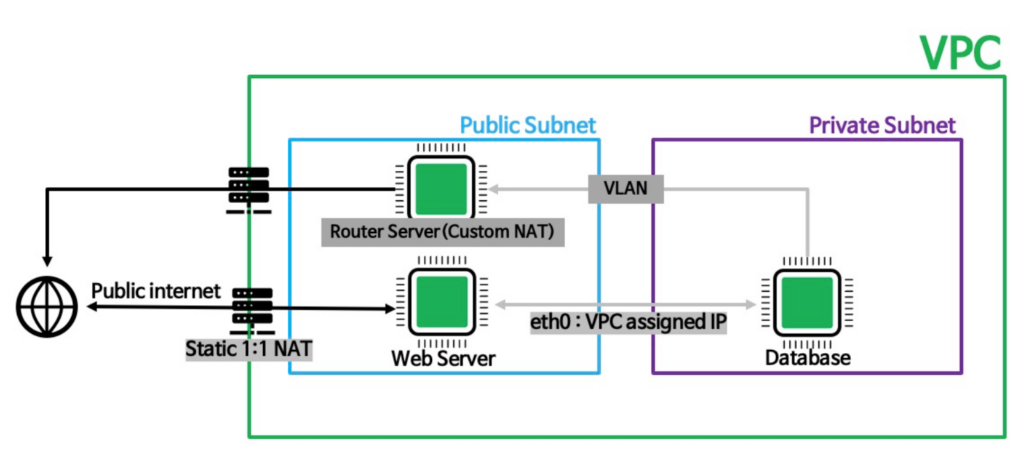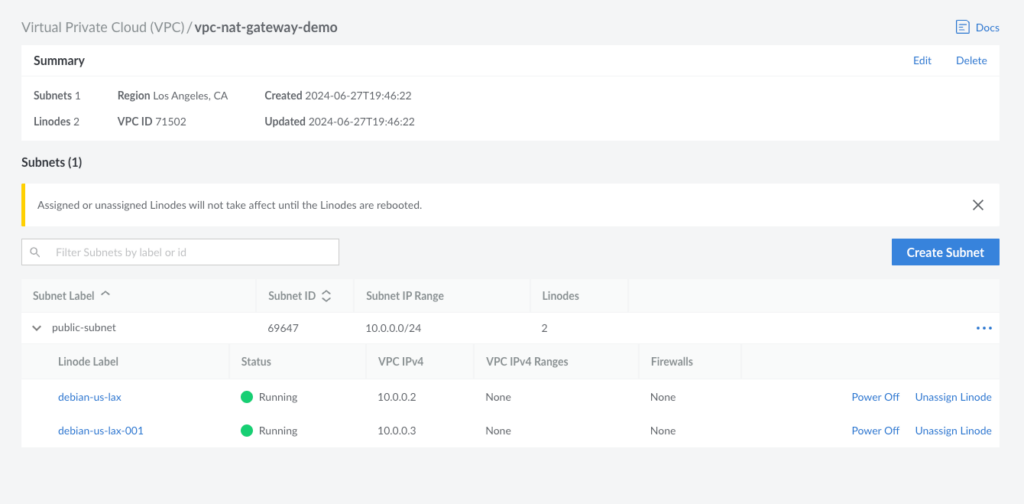Enhance Cloud Security with Linode’s NAT Gateway in a VPC
In the world of cloud computing, security and efficient resource management are paramount. Linode, a well-known provider in this field, has recently introduced a significant upgrade to its Virtual Private Cloud (VPC) service: the NAT Gateway. This new feature promises to bolster cloud security by allowing internet access without exposing private instances.
Understanding the NAT Gateway
NAT, or Network Address Translation, is a method used in networking that modifies network address information in the IP header of packets while they are in transit. This allows multiple devices on a local network to be mapped to a single public IP address, enhancing both security and management.
Linode’s NAT Gateway works within a VPC, which is a private network space within the Linode cloud. With a NAT Gateway, instances within a VPC can access the internet for updates and patches, or communicate with other services without the need to assign a public IP address to each instance. This setup significantly reduces the attack surface and potential vulnerabilities.

Why Use a NAT Gateway?
There are several compelling reasons to use Linode’s NAT Gateway in a VPC:
1. Enhanced Security: By keeping instances private and not assigning public IP addresses, the risk of external attacks is minimized.
2. Cost Efficiency: Reducing the number of public IP addresses required can help lower costs.
3. Simplified Management: Managing a single point of internet access is simpler than managing multiple public IP addresses.
4. Improved Compliance: For organizations that need to comply with stringent security regulations, a NAT Gateway helps in meeting those requirements by ensuring that private data remains within the private network.
How Linode’s NAT Gateway Works
The NAT Gateway operates by directing outbound traffic from instances in the VPC to the internet while keeping inbound traffic from the internet blocked. Here’s a simple breakdown of the process:
1. Instance Communication: Instances in the VPC send requests to the NAT Gateway.
2. Address Translation: The NAT Gateway translates the private IP addresses of the instances to the public IP address of the gateway itself.
3. Internet Access: The translated requests are sent to the internet.
4. Response Handling: Responses from the internet are sent back to the NAT Gateway, which then translates the public IP address back to the private IP address of the instance.
By using this method, instances can communicate with external services securely, without exposing their private IP addresses.
Setting Up the NAT Gateway
For developers and system administrators, setting up Linode’s NAT Gateway is straightforward:
1. Create a VPC: Start by creating a new VPC in the Linode dashboard.
2. Configure Subnets: Define subnets within the VPC for organizing resources.
3. Launch Instances: Deploy instances within these subnets.
4. Setup the NAT Gateway: Add the NAT Gateway to the VPC configuration.
5. Route Tables: Update the route tables to direct outbound traffic from instances to the NAT Gateway.
Linode provides comprehensive documentation and support to help users through each step, ensuring a smooth setup process.
Good to Know Information
It’s important to understand a few additional aspects of Linode’s NAT Gateway for a complete grasp of its benefits:
High Availability: Linode’s NAT Gateway is designed for high availability, ensuring that your instances maintain internet connectivity even if there’s a failure in one part of the network.
Scalability: The NAT Gateway scales automatically to handle varying amounts of traffic, making it suitable for both small projects and large-scale deployments.
Monitoring and Logging: Linode offers tools to monitor traffic through the NAT Gateway and keep logs of network activity, which is crucial for debugging and security audits.
Industry Reactions
The introduction of the NAT Gateway by Linode has been met with positive reactions from the industry. Many experts praise its potential to enhance security and reduce costs. According to some Cloud Architect professionals “Linode’s NAT Gateway is a game-changer for cloud security. It simplifies the process of managing secure internet access for private instances.” The cost savings from reducing the number of public IPs needed is significant. This is a smart move by Linode.”
Conclusion
Linode’s NAT Gateway in a Virtual Private Cloud is a robust solution for enhancing cloud security. By allowing internet access without exposing private instances, it reduces the risk of attacks, lowers costs, and simplifies management. For businesses and developers looking to secure their cloud environments while maintaining efficient operations, Linode’s NAT Gateway is an invaluable tool.
For more detailed information and to get started with Linode’s NAT Gateway, you can visit Linode’s official documentation and support pages.
For more Information, Refer to this article.



































